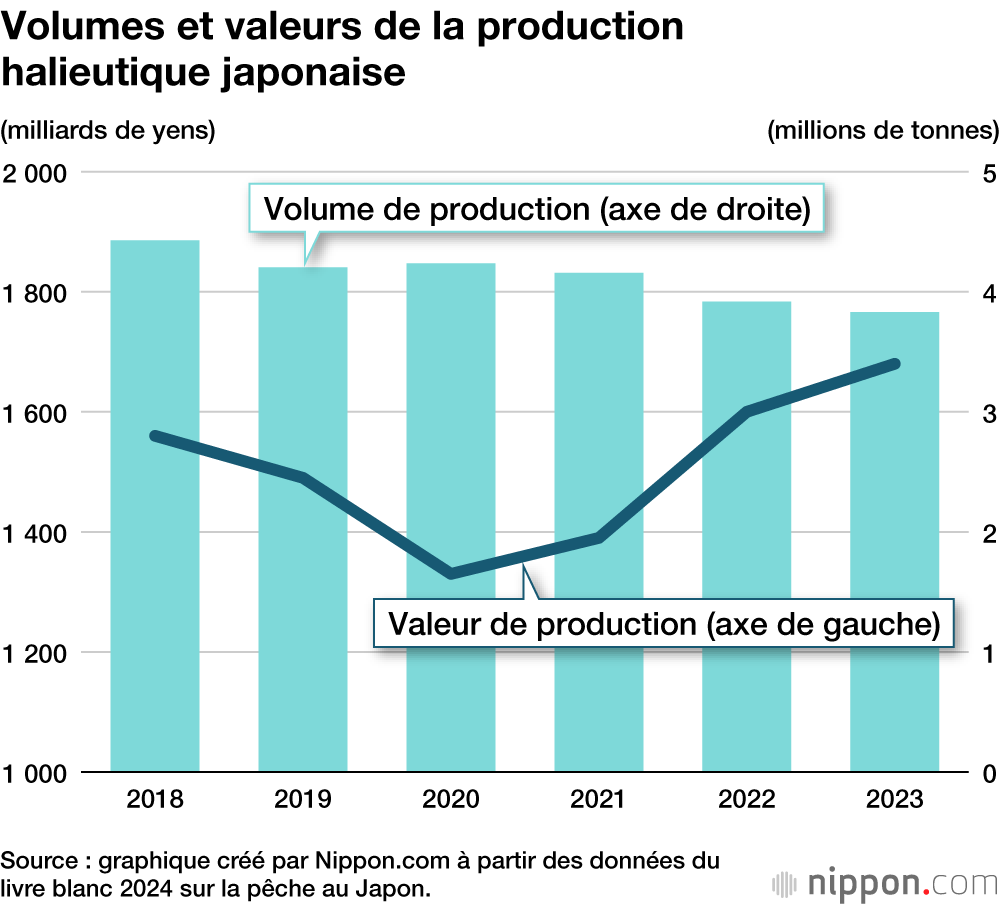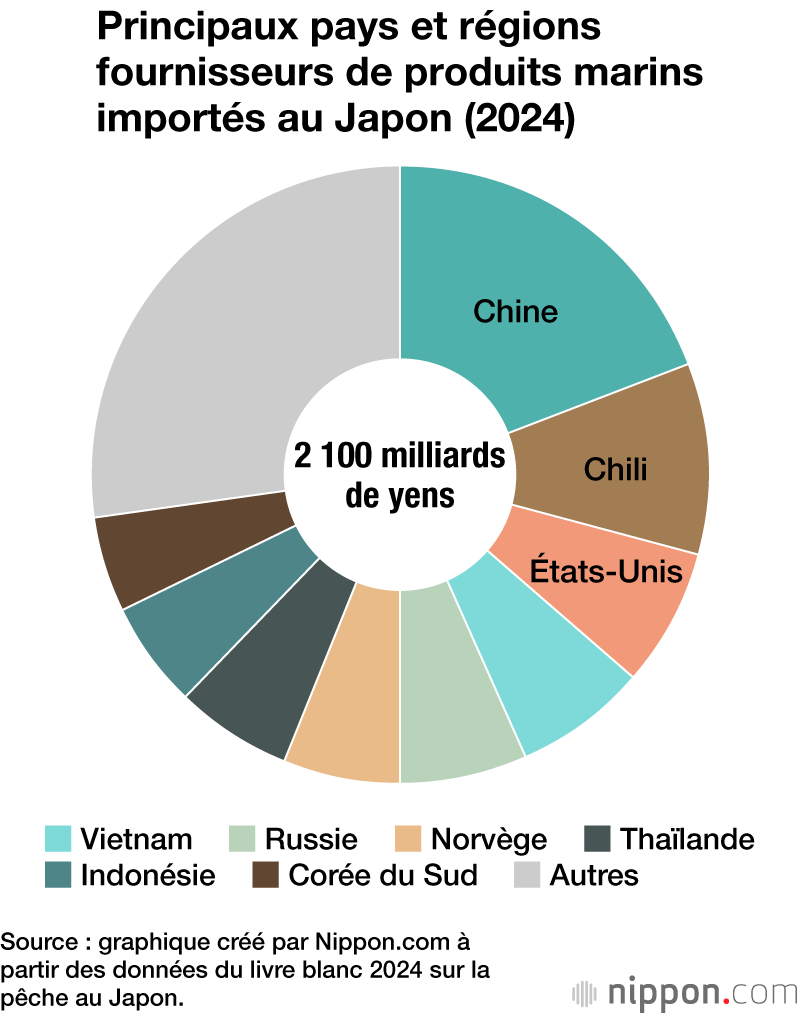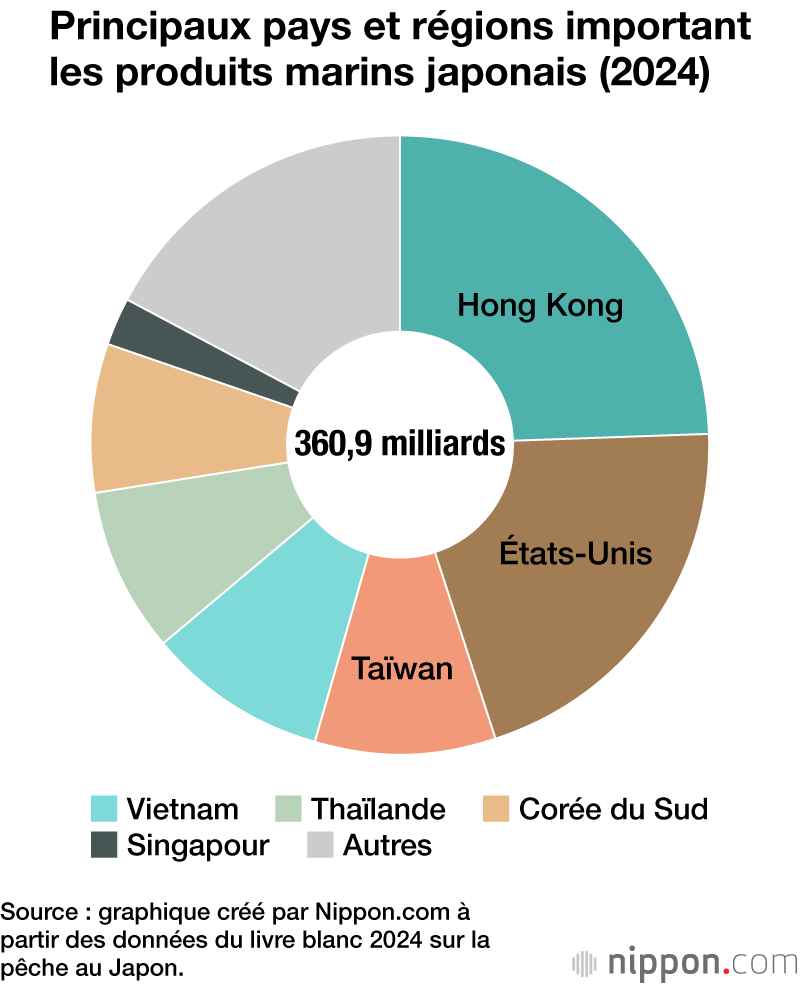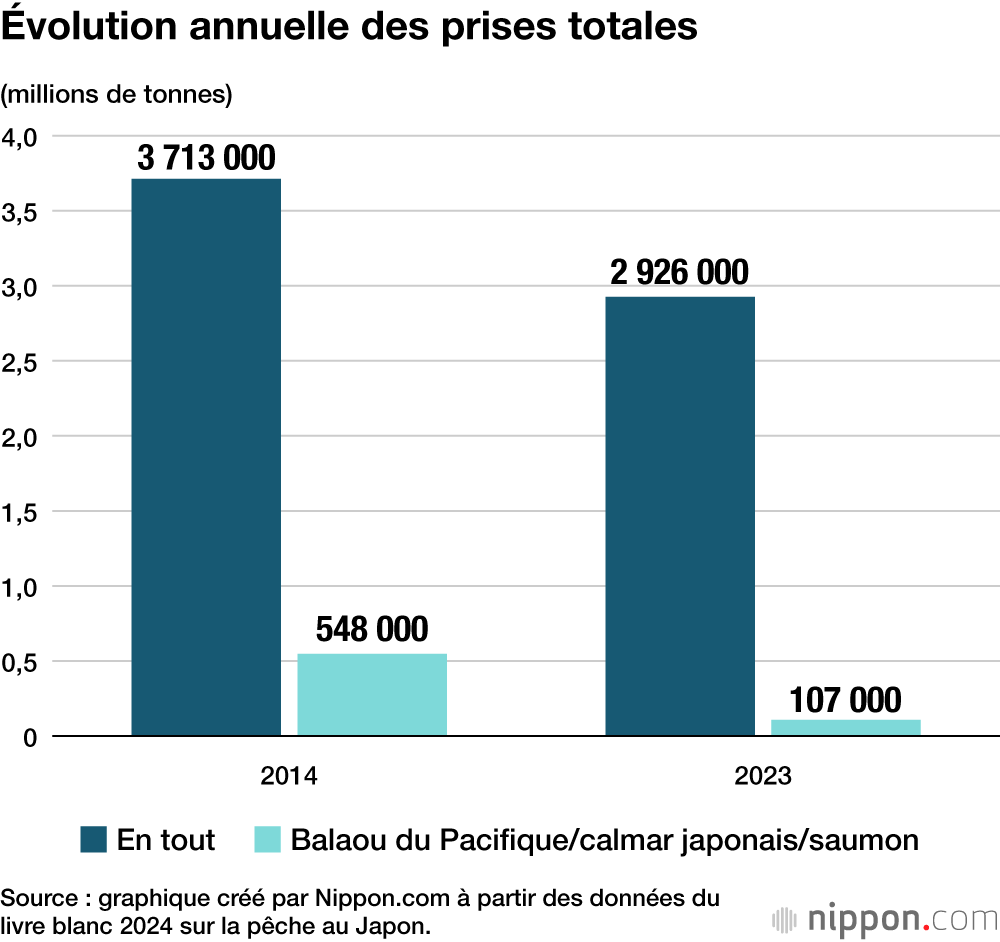The production value of Japan’s fisheries and aquaculture sector rose by 5% in yen, despite a 2% drop in output volume. Notably, catches of Pacific saury, Japanese flying squid (surume-ika), and salmon have plummeted dramatically over the past decade.
According to the 2024 White Paper on Fisheries in Japan published by the Ministry of Agriculture, Forestry and Fisheries, the total production value for fiscal year 2023 (April 2023–March 2024) reached 1.7 trillion yen (approx. €9.97 billion), a 5% increase from the previous year. A sharp rise in fishmeal prices helped drive sardine prices to their highest level in two decades.
Marine fisheries accounted for 953.4 billion yen (€5.57 billion), up 4%, while marine aquaculture jumped 10% to 595.6 billion yen, largely due to rising prices for nori seaweed. In contrast, the combined value of freshwater fisheries and aquaculture declined by 3%, to 136.3 billion yen. Overall production volume fell by 2% to 3.8 million tons—barely 30% of the historical peak of 12.8 million tons recorded in 1984.
Aquaculture made up 23% of total volume (880,000 tons), but nearly 43% of total value, generating 716.9 billion yen (€4.2 billion).
Volumes and Values of Japan’s Fisheries Production

In 2023, Japan’s self-sufficiency rate for seafood products intended for human consumption was around 54%, down two points from the previous year. This rate has been in long-term decline since reaching a peak of 113% in 1964. Annual per capita seafood consumption is estimated at 21.4 kilograms (down 0.1 kg). It peaked in 2001 at 40.2 kg per person and has been steadily decreasing since.
Sharp Drop in Export Value

Japan’s seafood imports remained steady at 2.2 million tons in 2024, but their value rose by 2.2% to 2.1 trillion yen (€12.27 billion). The main supplier countries were China, Chile, and the United States, with salmon and trout, shrimp, bonito, and tuna as the top imported products.
Main Countries/Regions Supplying Seafood to Japan (2024)
Conversely, Japan’s seafood exports declined by 5.5% in volume in 2024 to 450,000 tons, and their value dropped by 7.5% to 360.9 billion yen (€2.1 billion). Since August 2023, China had maintained an embargo on Japanese seafood following the release of treated wastewater from the Fukushima Daiichi nuclear plant, but the ban was lifted in late June 2025. Top export destinations were Hong Kong, the United States, and Taiwan, with scallops, buri (yellowtail amberjack), and pearls being the most exported products.
Main Countries/Regions Importing Japanese Seafood (2024)

The 2024 White Paper also includes a special section on the impact of climate change on Japan’s fishing industry. It notes that rising sea temperatures and changing ocean currents have dramatically disrupted the sector. Combined catches of Pacific saury (sanma), Japanese squid (surume-ika), and salmon fell by nearly 80% between 2014 (548,000 tons) and 2023 (107,000 tons).
Annual Trends in Total Catches

Sources used in the graphs:
2024 White Paper on Fisheries in Japan (Japanese), Ministry of Agriculture, Forestry and Fisheries.




